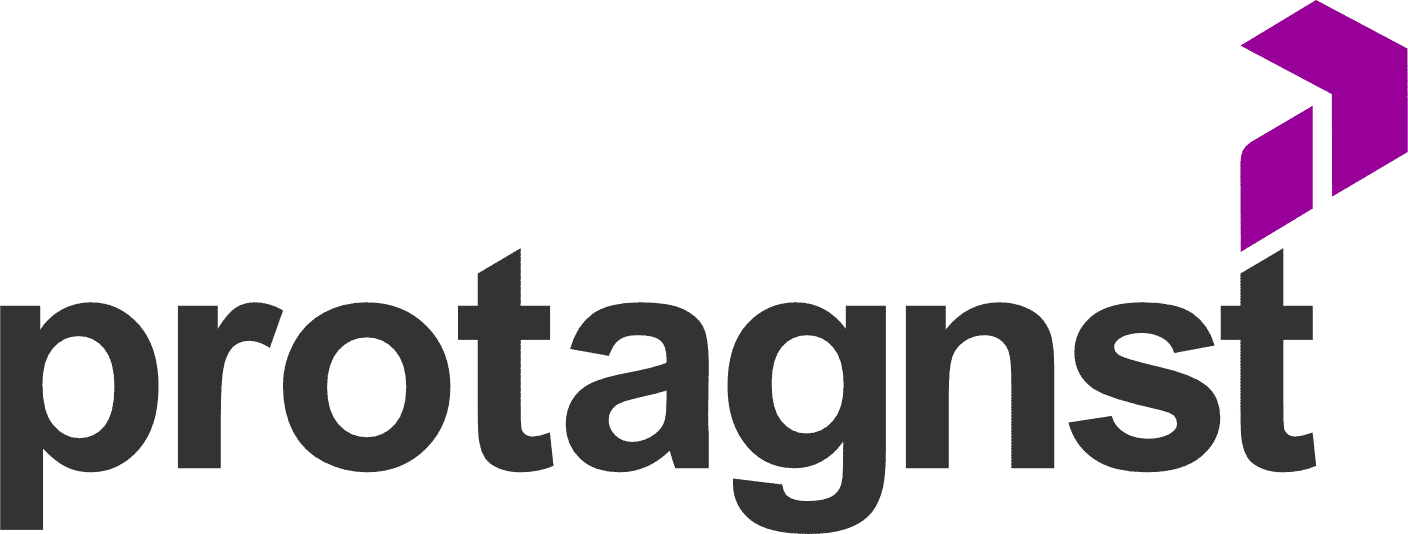Nowadays, there exist different types of marketing, as well as offline. It depends on your business you can prefer to use offline marketing or only using online marketing. By the way, here goes a spoiler: The ideal is to mix the two types in order to reach as many people as possible!
If you’re not convinced or still want to know better about the principals strategies of marketing, stay here. After all, in today’s text, we will explain one of the biggest types of marketing, how they work and its benefits.
We’ll begin by the types of online marketing, like digital marketing which includes inbound marketing and outbound marketing. Beside this, we’ll explain how offline marketing works nowadays and if it’s possible to use it.
Mapa do Conteúdo:
ToggleWhat is Digital Marketing?

Digital marketing is a broad term for products of marketing and services using digital technology mainly on the internet but also including smartphones, graphic advertising and any digital medium.
The goal of digital marketing is to reach potential customers through the internet with content that is relevant and valuable to them.
Techniques of digital marketing, like search engine optimization (SEO), search engine machine (SEM), content marketing, influencer marketing, social media marketing, e-commerce marketing and mobile advertising, can help the organizations and expand your business online, reaching a more relevant audience with less effort.
Why invest in Digital Marketing?
Companies are investing in digital marketing to remain competitive, catch up new clients and retain the old ones. There are many benefits of digital marketing such as higher ROI, lower cost and wider reach. Some of the principal benefits of digital marketing is that it has a bigger ROI than the channels of traditional marketing.
Digital marketing it’s cheaper than the other traditional channels because it doesn’t require materials or expensive equipment. It’s also easier reaching a specific public with techniques of digital marketing, such as social media advertising. A wide variety of methods can be used for digital marketing, including online brochures, blogs, podcasts and e-commerce.
5 tips for running a successful digital marketing campaign
Digital marketing campaigns have become an essential part of modern marketing strategy.
Companies that want to remain competitive need to invest in digital marketing. But, not all digital marketing campaigns are successful.

Here are 5 tips for running a successful digital marketing campaign:
1) Define your target audience and identify their needs and desires
The most important thing in any marketing campaign is understanding your target audience: What they want? What’s their needs? How can your product or service solve their problems? Remember to identify the pain points you’re solving for them, and make sure you address those issues in your campaign copy.
2) Find the right channels to reach your target audience
Digital marketing is an excellent way to reach a wide audience, but that won’t happen unless you find the right channels to do so. There are many different forms of digital marketing such as: social media, email marketing and search engine optimization.
3) Create a good content plan
The digital age is characterized by an inexhaustible supply of information. The challenge presented by this constant stream of content is how to capture and hold the attention of an audience that has grown accustomed to an influx of digital noise.
4) Optimize your content for Search Engine Optimization (SEO)
Search Engine Optimization (SEO) in digital marketing refers to affecting the visibility of a website or a webpage in unpaid search engine results – often referred to as “natural”, “organic” or “earnings” -which are typically displayed in the order that the search engine finds most relevant and useful.
To rank well in search engines queries, your website content must be rich in keywords and phrases. Make sure your site is mobile responsive so it performs well on all platforms. Make sure your blog posts are optimized for relevant keywords and your website has plenty of content.
5) Promote your content on social media platforms
You wrote an amazing post, now how are you going to get people to read? One of the best ways is to promote it on digital media platforms. Social media sites provide a space for you to share your content with others and they can share it with their own followers.
Digital marketing tools and services you should know
This section will talk about digital marketing tools and services you should know about.
Tools are important in every industry, but they are especially essential in the digital marketing industry. Digital marketing is a fast-paced industry, which means it is constantly evolving and new tools are being developed every day. This section will introduce some of the most popular tools and services that have been used by many companies around the world.
Digital marketing tools and services you should know:

1) Google Analytics:
Is an analytics tool that tracks your website traffic data, including where your visitors came from, what they did on your website, how long they stayed on your website, etc. It also provides a variety of reports to help you better understand how your site is performing.
2) Google Adwords:
Is an advertising platform that helps you advertise on Google search results. You can analyze how your ads are performing, tweak them for maximum impact, and track the success of different campaign types.
3) Facebook Ads:
Is an advertising platform that helps you advertise on your friends and family’s Facebook newsfeed. You can analyze how your ads are performing, tweak them for maximum impact, and track the success of different types of campaigns.
4) BuzzSumo:
Allows you to quickly find topics related to a particular topic or keyword. This can help you find content that your audience might be interested in.
5) Google Trends:
Lets you discover popular search queries and related topics based on the number of searches performed over the last 12 months. You can also use this tool to identify trending topics that might be worth exploring further.
6) Taboola:
It’s a content discovery platform that helps publishers, brands and media companies like BuzzFeed, Huffington Post and Outbrain deliver content to their users across the web.
7) Google Display Network:
Allows you to advertise your site to multiple publishers on the Google Display Network. Promote your site on sites that appear in top search results for relevant keywords.
8) Keyword Tool:
The keyword tool is a full-size free tool that helps you discover the most relevant and competitive long-tail keywords for your website.
9) Google Places:
Allows you to display your business information on Google Maps and search. It also helps your business rank higher in search results, which to more customers.
10) MailChimp:
It is a reliable and affordable email marketing service. It offers over a hundred integrations, fast integrations with Google Analytics and an easy to use drag and drop interface.
11) SocialBro:
It’s a social media marketing tool that gives you a variety of marketing insights, including who your best prospects are on Facebook, websites they visit, and the content they share.
12) Buffer:
It’s a social media management tool and timesheet service. It allows users to schedule posts and track work with time entry. Buffer also provides analytics for brands and teams, a social inbox, user-generated content curation, and other features that make social media management easy for all types of businesses or individuals.
Definition of Inbound Marketing and what it involves
Inbound marketing is a technique for generating leads and sales through content. The purpose of inbound marketing is to attract potential customers to the company’s website or store by providing them with valuable and engaging content. This content can be in the form of blog posts, videos, infographics, etc. Inbound marketing can help businesses build an online presence and increase their visibility on search engine results pages. This is useful for businesses that are just starting a website or have recently launched their website and need to build momentum. The course of inbound marketing can vary depending on the business and the content. Some businesses only rely on blog posts for their marketing efforts, some only use infographics, and some have a combination of both. Key aspects of inbound marketing are making your website easy to find and providing quality content that isn’t overly promotional but still generates interest in your brand.

4 steps to get started with Inbound Marketing
Inbound Marketing is a marketing strategy that focuses on attracting customers to a company’s website through content.
The first step to start an Inbound Marketing campaign is to identify the target audience. This is done by understanding your needs, wishes and desires. Needs are the things that are essential to your business. They can be anything you need to operate. Wishes are the things that people constantly ask for and wish for with great importance. Often they are not essential and can be done without them, but they can also cost a lot or complicate your life.
The second step is to create content that meets those needs. A content strategy is the process of creating and using content to deliver value to your audience. The goal of a good content strategy is to help improve customer engagement and build trust. Inbound marketing content is focused on responding to your audience’s pain points and solving problems. Create content that addresses these issues to bring your customers back to you again and again. Content includes blog posts, videos, infographics, downloadable guides and white papers, and other digital assets. Make sure the content you create is valuable by addressing what medium it will be consumed in.
The third step is to promote this content so that it reaches the target audience. Inbound content promotion revolves around social media promotion, building a website, and email marketing.
Promotion through social media is done by linking to the article or blog post that discusses your business and also sharing it with your followers. This could include using visual content or infographics to make your business more appealing to potential customers.
Building a website is one of the most powerful marketing tools and also one of the hardest. Creating a website that effectively captures your audience’s attention and then directing them to that website when they’re ready to buy is hard work.
The fourth step in getting started with inbound marketing is to track the performance of that content and adjust accordingly if necessary.
The most important measure is to track the traffic that the content generates, which can be done using tools such as Google Analytics. If you are using a blog, you can track how many people visit your blog each day and/or week. If you are using social media to share content, you can also track how many people have viewed or engaged.
Top 10 Reasons Why You Should Use InBound Marketing
Inbound marketing is a type of marketing strategy that is based on attracting customers to your business. It’s the opposite of outbound marketing, where you send your content and advertising to potential customers.
Inbound marketing focuses on attracting potential customers, building trust, providing valuable content, and establishing yourself as an expert in your industry.
This section will talk about the top 10 reasons why you should use InBound Marketing for your business:
1) Increase conversion rates:
Inbound Marketing increases conversion rates by focusing on generating interest in your brand and getting people to take a desired action (i.e. sign up for a free trial).
2) Reduced Costs:
It’s more cost effective than other forms of marketing because it doesn’t require payment in order to get results.
3) Increase in sales:
Inbound Marketing increases sales by increasing brand awareness, generating a positive impression of your product and service, and making it easier for consumers to convert into customers.
4) Attract new clients:
Inbound Marketing has the ability to attract new customers who have never heard of your business before through content marketing and social media advertising.
5) More new customers:
Inbound Marketing has the ability to attract new customers who already know your company better through content marketing, social media advertising and product marketing.
6) Increase Brand Recognition:
Inbound Marketing increases brand awareness through blogs, podcasts and videos that provide valuable information about your business.
7) Increase customer satisfaction:
Inbound Marketing increases customer satisfaction by providing a better customer experience and eliminating the need for paper forms.
8) Increase Revenue:
Inbound Marketing increases revenue by introducing new products and services, connecting with customers through social media, and creating digital marketing content.
9) Decrease Costs:
Inbound Marketing decreases costs by automating many tasks, making your business more efficient which will increase profits.
10) Increase Your ROI:
Inbound Marketing increases the return on investment for your company by increasing customer lifetime value.
What is outbound marketing?
Outbound marketing is the process of attracting potential customers to your product or service. It is a very popular form of marketing that involves advertising and promotional campaigns. It is also called outbound marketing, outbound sales, or direct response marketing.
Outbound marketers are responsible for researching potential customers, developing a strategy to reach them, and executing the plan in such a way as to convince them to buy the company’s products. They may use email, direct mail, telemarketing, social media advertising or other channels to reach their target audience.
The term “outbound” refers to the fact that this type of marketing involves reaching and contacting people who are not yet familiar with the company’s offerings. It is also called “push” marketing because it pushes information to people in an attempt to make them aware of an offer, product or service.
Also, outbound marketing is not just about advertising and branding. It also includes lead generation, customer engagement and lead nurturing. This type of marketing is all about building relationships with your prospects, providing them with valuable content and incentives for them to do business with you. The goal of outbound marketing is to generate leads that can be converted into sales opportunities.
What is the difference between inbound marketing and outbound marketing?
In inbound marketing, you want to grab people’s attention when they’re already looking for something specific – like your products or services. You build that interest by providing useful content on your website or social media channels that can be shared with friends and family. This way, people will not only know about your products, but they will also be inclined to buy them from you.
Outbound marketing, as you’ve learned, is a marketing strategy that relies on reaching customers with promotional messages, usually using traditional media channels.
Inbound marketers have the advantage of not having to spend time and money to find their target audience because they are already reaching them. This saves them time and money, which in turn means they can focus on building relationships with their customers.
On the other hand, outbound marketers have the advantage of reaching a wider audience much faster than inbound marketers, but this also means that they have less control over who is getting their message.
What are the essential strategies to apply outbound marketing?

Whichever type of media you choose for your outbound marketing strategy, you must take certain precautions to make sure it asserts itself. Let’s see what they’re:
Establish the ICP or Persona:
First of all, for any type of marketing strategy to work, especially the outbound one, you need to know it: Who are your potential customers? To do this, you must establish this profile.
If your customers are particular, develop a persona. It’s a semi-fictional representation of your ideal customer and includes not only name, age, occupation, gender and other demographics, but also preferences, fears and habits.
In the case of B2B (Business to Business) companies, the ICP (Ideal Customer Profile) is a combination of the characteristics of their best customers. That way, you can find companies with similar needs and qualities to offer your solutions.
Create a marketing plan:
A second very important step for your outbound marketing campaigns to be successful is marketing planning.
Through this document, the professional will establish all the guidelines of his planning. To do this, you must have:
- Environmental Analysis;
- Competitor Analysis;
- Planned Action;
- Work Schedule;
- Monitoring Measures.
The marketing plan will ensure the organization and affirmation of your actions. So, even if it seems like unnecessary bureaucracy, do not hesitate to do it!
Don’t give up if a potential customer rejects your offer:
Usually you and your salesperson will get a “no”. However, this does not mean that the lead can never become your customer.
It stands to reason that you shouldn’t try to promote your product again right away. However, you can continue to maintain an association with the prospect by utilizing the educational content produced by the inbound professionals to make them more qualified. Yes, here the union of the two types of marketing fits very well.
Therefore, the relationship with this individual is maintained and he can always become a customer of your brand.
Define a qualified sales team:
To make sure that your strategies and techniques work, it is essential that you work with a team of highly qualified professionals. This requires the involvement of the professional who will deal with the disclosure to the person who will definitely close the deal.
A dynamic team, which distributes work intelligently, tends to have superior performance. In this way, you need to understand the performance of each team member so that you can leverage their strengths to benefit your business.
What are the advantages of outbound marketing?
Like other marketing strategies, outbound has its pros and cons. To begin with, we distinguish three advantages that the adoption of this strategy brings to the companies that adopt it. See below:
1) Easier to measure:
One of the main advantages is being able to confirm whether your persona and your pitch make sense for the audience you communicate with.
Since your company is in contact with so many individuals, there is a possibility to measure whether your strategy and communication are sound – and this will be used to fine-tune your inbound strategy later on.
In addition, by centralizing information stored in the sales system, measuring results, such as rejection rates, conversions, among others, is simplified.
2) Easier ROI proof:
Investment in inbound marketing is long-term. You create relevant content, build your authority, and optimize for Google using SEO techniques. However, it takes time to prove the ROI, the return on investment.
On the other hand, the outbound has an advantage in this regard. That’s because the moment you make the decision to start generating leads, you can quickly drive customers to your business. The sales time will depend more on your sales journey than on your marketing strategy.
In the end, you will hit the market in a way.
3) Building the team:
Knowing the strategy you want, it will be easier to establish the ideal professionals for the position. When discussing inbound marketing, it is necessary for the specialist to have some specific qualities. Not just to build relevant content, but also to be able to present it perfectly.
In outbound marketing, the strategies are already well known and easier for people to assimilate, that is, there are many specialists for each available possibility.
What’s relationship marketing?
Relationship marketing is a type of marketing that focuses on building relationships with customers and prospects. It is different from other types of marketing in that it focuses on long-term customer relationships. This type of marketing is also called “relationship building” or “relationship selling”. It typically includes the following: – Increasing customer loyalty by providing excellent service – Developing a personal relationship with the customer – Building trust through regular contact, transparency and honesty – Providing value to the customer in ways that create a sense of reciprocity.
4 benefits of relationship marketing

1) Relationship marketing is a long-term strategy to build customer loyalty and increase your customer base.
One of the best ways to build customer loyalty is to offer excellent service. This can be difficult as you need to have the right people in place, which is why it’s important to invest time and resources in developing a relationship marketing strategy.
2) Relationship marketing can help you reach customers who may not be aware of your products or services.
You might be wondering how to get your products or services in front of people who don’t know you. Relationship marketing is a great way to reach new customers and create future customers. The idea is that you establish genuine relationships with your customers and develop a long-term bond with them. This builds trust and goodwill in the marketplace for your business, which can lead to more sales down the road.
3) Relationship marketing helps you build better relationships with your customers and prospects, which in turn helps improve brand recognition and market trust.
Building relationships with customers and prospects is an essential part of building brand awareness and trust in the marketplace. Relationship marketing helps you do this by helping you keep your customers up to date with the latest product launches, updates, sales and more.
4. Relationship marketing gives you a way to see what customers like, dislike, or want more so you can make changes accordingly.
Relationship marketing is the process of nurturing and managing a customer’s relationship with your company. It’s a way to see what customers like, dislike, or want more of, so you can make changes accordingly. One way to do this is by sending out surveys or conducting interviews to understand your needs.
What is Affiliate Marketing?
Affiliate marketing is a type of performance-based marketing in which a business rewards one or more affiliates for each visitor or customer brought in by the affiliate’s own marketing efforts.
It is also known as “cost-per-acquisition” (CPA), “pay-per-click” (PPC), “pay-per-lead” (PPL) and “performance-based marketing”. Affiliates are paid according to the agreement between the affiliate and the merchant, on a flat fee or commission basis. Affiliate marketing is commonly confused with referral marketing, which is the practice of generating business by attracting many readers to a website by optimizing content and offers for an audience rather than paying people.
A business may choose affiliate marketing to complement other forms of online advertising such as search engine marketing or display advertising. In case of association with lead generation companies, affiliates are paid per lead.
Affiliate marketing can be divided into three categories: performance-based, product-based, and relationship-based. Performance-based affiliate marketing is measured according to the amount of sales or leads generated. Product-based affiliate marketing is all about direct selling where merchants pay affiliates a commission on their product sales.
The relationship-based affiliate marketing program is focused on building customer relationships by offering expert content, commenting on blogs, forming customer communities, and much more.
5 advantages of affiliate marketing
Affiliate marketing is a way to earn money by promoting other people’s products. The affiliate marketer will advertise the product and receive a commission for every sale it generates.
Following are some of the benefits of affiliate marketing:
1) You can earn money without having to invest any capital
With affiliate marketing, you can earn money without the hassle of having to invest capital. Affiliate marketing is a popular way for bloggers and entrepreneurs to make money online. There are many different ways to generate income as an affiliate and the most popular methods include selling someone else’s products through your website or social media channels, promoting other people’s services for a commission, or even taking a cut from someone else.
2) You can earn money even if you don’t know anything about the product
When people want to buy a product or service, they often turn to the internet for help. This is where affiliate marketing comes in. In affiliate marketing, you are basically an independent seller selling a product in exchange for a commission for every sale. You don’t have to own any products, deal with customers, or fulfill orders. All you have to do is place ads on your website. However, you need to be attentive to the details, otherwise your spreadsheet will not be able to compete with the biggest players in the affiliate marketing industry. If you don’t know how to run formulas in Google Sheets or Excel, this is not something you should spend your time doing.
3) It is easy to start and stop at any time
It is easy to start and stop at any time, the risk is much lower than when investing in other businesses. It’s also one of the easiest ways to start an online business.
4) It doesn’t matter where you live as long as you have internet access
Affiliate marketing is a great way to start an online business because you don’t have to invest in inventory, set up a store, or pay rent. You just need to find affiliate products that sell and are related to your blog topic.
What is offline marketing?
Offline Marketing is traditional and older marketing, which uses strategies aimed at physical and face-to-face actions. For example, with it, you can use billboard ads, pamphlets, telemarketing, TV or radio advertisements, publications in magazines and newspapers, signs, among others.
Nowadays, offline marketing is mostly used in conjunction with digital marketing. After all, with the advancement of technologies and migration to the digital environment, companies need to adapt to acquire new generations of customers.
What are the benefits of offline marketing?
Offline marketing has a number of benefits to offer over online marketing. These include:
- It may seem more personal than digital marketing, as there is that physical or face-to-face contact;
- Reaches people who are not connected to the internet or social networks, such as the elderly or those who do not have the purchasing power to access the digital world;
- It helps in the development of brand recognition and reputation in the offline world, that is, it establishes a more powerful presence in the day-to-day of part of the public;
- It contributes to privacy protection as it makes it easier to protect your privacy when marketing offline. For example, if you’re a physical store, it’s harder to track what your customers buy than it is when they buy online.
6 offline marketing strategies
For you to remember some of the main offline marketing tactics, we made the following list with the biggest strategies used until today:
1) Direct mail marketing
Direct mail marketing is a type of marketing that involves sending letters, postcards or packages to potential customers. It is one of the most effective types of direct marketing because it can be customized to each customer’s specific needs and interests.
Direct mail can be mailed, in person or through a mail house and market research is required to identify potential markets. Mail may be sent to businesses with a large number of consumers who are likely to purchase related goods or services, or to a specific geographic area.
Mailings are planned, crafted and sent specifically for each individual customer. Mailing customers can be expensive as it usually requires a specialized mail house to carry out the mailing service.
The cost of reaching potential customers via email is significantly less than mailing because the business does not have to pay for paper and postage costs.
2) Business Fairs
Trade shows are an effective way to promote your company and your products or services. It allows you to reach a large number of potential customers in person and answer any questions they may have about your business.
3) Outdoor Advertising
Outdoor advertising is a form of marketing that involves promoting your business through advertisements on billboards, buses, trains, building signs, etc. These ads are usually seen by a large number of people every day and can be very effective in reaching new customers.
4) Leafleting
Leafleting can be done in many different ways. One way is to use a mobile flyer strategy, where you have someone walk around with flyers in their pocket and pass them out as they go through the day. Another strategy is to hand out flyers door-to-door with a map of your area and then go house-to-house handing out the flyers.
5) Telemarketing
Telemarketing is the act of marketing goods or services over the telephone. It’s a way to reach potential customers and interact with them over the phone.
Telemarketing can be used as a standalone strategy or in conjunction with other offline and online strategies such as direct mail, email, trade shows and TV ads.
The use case for this marketing strategy is that it allows you to reach people who aren’t actively looking for your product or service – they’re just “available”.
6) Door-to-door visits
Door-to-door visits are a common tactic in offline marketing. It’s one of the most effective ways to create awareness for your product or service. Prospects may be more receptive to sales pitches when they are delivered in person, and door-to-door visits give you the opportunity to connect with them on a personal level.
This type of marketing is often used by companies that have products or services that require face-to-face interaction, such as home security systems or furniture stores. Door hangers can also be an effective way to promote your business while also providing your customers with information that might be helpful, such as when there was a recent burglary at your address.
Do you think all this is too much for your full head? Don’t worry. Fortunately, there are companies ready to help you achieve the best results.
Protagnst was created to help companies generate qualified B2B leads. As we practice a consultative sales process, we start to listen to the client and apply our inside sales consultancy.
We work with B2B Outbound campaigns and other services to support the creation of marketing strategies and target audience definition, in addition to structuring commercial processes. We have been listening to the public and creating solutions aligned with the needs of our customers. Feel free to schedule a meeting with us to understand how your business can be taken to the next level with our service.
Click here to schedule a meeting and see how we can help your company achieve more sales predictability.
Also, be sure to stay tuned to the blog for more complete and relevant content!




